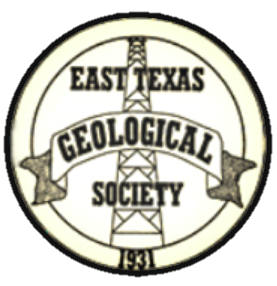MARCH 2016 LUNCHEON MEETING
John A. Breyer
of Marathon Oil
presents
From the Arch to the Uplift: Depositional Changes in the Cenomanian-Turonian Interval (Eagle Ford and Woodbine Groups) across Central and East Texas
11:30 AM Wednesday, March 16, 2016
at the Cascades
4511 Briarwood Road
Tyler, TX 75709
BIOGRAPHY
John A. Breyer
John A. Breyer is a Senior Technical Consultant in Technology Application (Resource Plays) at Marathon Oil, Houston, and an Emeritus Professor of Geology at Texas Christian University. John joined Marathon in 2011 after teaching for thirty-three years at TCU, where he won numerous teaching, research and service awards. He received the GCAGS Outstanding Educator Award in 2005. John took groups of eager students to Scotland every summer from 1993 until retiring from the University. Most of his former students are in the oil and gas industry. John has authored or co-authored more than sixty articles in international and national scientific journals. Most of his writings are related to petroleum geology but his eclectic interests have led to publications on Precambrian trace fossils, Cretaceous volcanism in Trans Pecos Texas, Miocene vertebrate faunas of the High Plains, the geology of Jules Verne, and the philosophy of Sir Charles Lyell. Based on his research contributions he was elected a Fellow of the Geological Society of America in 1991. His presentations at national meetings have twice been recognized for excellence by his peers. John is an expert in the geology of unconventional resource systems. He edited and contributed to AAPG Memoir 97 Shale Reservoirs—Giant Resources for the 21st Century, which won the Robert H. Dott Sr. Memorial award from AAPG as the Association’s best technical publication in 2012. A second AAPG memoir edited by John, The Eagle Ford Shale: A Renaissance in U. S. Oil Production, will be released later this year. In October, 2013, John spent two weeks hiking in the Himalayas as a participant in the National Geographic Society sponsored trip, Bhutan: The Sacred Valley Trek. In 2014 he spent three weeks in Russia and a week in Japan. In October, 2015, much to his younger colleagues’ surprise, John survived a hike into the Mt. Everest base camp. In the past John has been to Scotland, England, France, Mexico, Canada, Costa Rico, Honduras, Argentina and Chile to take in the geology/scenery, and to Abu Dhabi, Poland, Norway and Germany on business. He hopes to make the hike into Machu Picchu in the Andes later this year.
ABSTRACT
From the Arch to the Uplift: Depositional Changes in the Cenomanian-Turonian Interval (Eagle Ford and Woodbine Groups) across Central and East Texas
J. A. Breyer, R. A. Denne and D. A. Bush
Marathon Oil, Houston, TX 77056
The Eagle Ford play in South Texas has increased oil production in the Lone Star state to its highest level in more than 25 years. Two lithologies comprise the bulk of the Eagle Ford Shale in the core of the play on the southwestern flank of the San Marcos Arch: calcareous mudrock (marl) and recrystallized limestone. The marls consist mainly of clay-sized coccoliths with varying amounts of sand-sized planktonic foraminifera. The limestones, which originally consisted mainly of radiolarians and calcispheres were replaced by calcite and then partially to entirely recrystallized. The marls were deposited under euxinic conditions beneath a stratified water column. The limestones formed during periods of enhanced water column mixing which promoted primary productivity and increased bottom-water oxygenation. The Cenomanian-Turonian interval was dominated by pelagic sedimentation on the southwestern side of the San Marcos arch. To the northeast of the Arch, toward the Sabine Uplift, this interval was dominated by clastic sedimentation associated with Dexter and Lewisville (Woodbine), Harris and Sub-Clarksville delta systems.
Six stratigraphic intervals can be recognized and mapped within the sequence of limestones and marls comprising the Eagle Ford Shale on the southwestern flank of the San Marcos Arch. Changes in major, minor and trace element composition mark the boundaries of these units. The Maness Shale lies between the Buda and Eagle Ford in Karnes County and to the northeast, but is absent to the southwest toward the Maverick Basin, where the Eagle Ford Shale rests directly on the Buda. The EGFD500 and EGFD600 comprise the Upper Eagle Ford. The EGFD600 is equivalent to the Langtry Member of the Eagle Ford Group of the Del Rio/Langtry outcrop belt, and the EGFD500 to the Scott Ranch Member. Neither of these units is present to the northeast of the San Marcos Arch, where the Austin rests directly on the Lower Eagle Ford. The uppermost Lower Eagle Ford can be subdivided into two units (EGFD400a and EGFD400b). The EGFD400a is equivalent to the Harris delta complex. It lies above the “resistive shale” and below the Austin. This unit is over 400 ft thick in Brazos County but is largely absent on the southwestern side of the San Marcos Arch where it forms only the upper part of the clay wedge present at the top of the Lower Eagle Ford. The isopach map suggests a source area to the east and south on the Sabine uplift. The bulk of the clay wedge in the Lower Eagle Ford in Gonzales, Lavaca and DeWitt counties is assigned to the EGFD400b, which correlates with the uppermost part of the resistive shale unit. The isopach map suggests this interval is an early, previously unrecognized phase of the Harris delta complex. The interval changes from interbedded marl and limestone to shale (argillaceous mudrock) to interbedded sandstone and shale moving from the San Marcos arch toward the Sabine uplift. The isopach map shows a source area to the northeast rather than to the east as for the Harris delta complex. The lowermost Eagle Ford (EGFD100) is time equivalent to the Woodbine in the East Texas. This unit thickens to more than 500 ft in Madison County. The isopach maps suggest that the source area for this interval is to the northeast.

